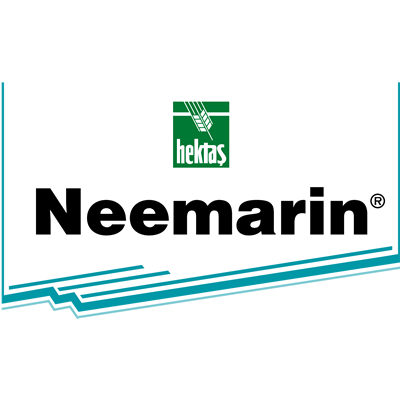Description
Specifications
Emamectin benzoate is highly effective against Lepidoptera larvae feeding on leaves and blocks nerve stimulation in larvae. In this case, the nutrition of the larvae immediately stops and they become paralyzed. Maximum larva deaths take place within 4 days. Viaduct is a strong stomach poison that also has contact action.
Package:1 kg
Method of Application
Cotton leaf worm in Pepper (greenhouse), Cucumber (greenhouse), and Eggplant (greenhouse): Spraying should be done if 1-2 newly hatched egg bundles or 4-5 larvae are seen in 100 plants. Larvae shouldn’t have scattered on the leaves before spraying.
Cotton bollworm in tomato (field-grown – greenhouse)and pepper (greenhouse): Treatment is immediately started if 5/100 plants are found to be contaminated, before the larvae enter the fruit.
Grapevine moth: Sprayings against grapevine moth are managed according to a forecast and warning system. Spraying is done if the number of moths caught in sexual pheromone traps has reached peak and started to fall; late afternoon temperatures exceed 15°C in two consecutive days in the first generation and become continuous; accumulated degree-days reach 120 degree-days in the 1st generation, 520 degree-days in the 2nd generation and 1047 degree-days in the 3rd generation; if, from a phenological perspective, the 1st generation corresponds to the grapevine’s bud stage, 2nd generation to unripe grape and 3rd generation to start of sweetening; and if the first larvae hatch from the eggs. One spraying is done for each generation. However, egg-laying may continue as of the 3rd generation and therefore sprayings are repeated as long as there are new eggs, considering the product’s effective period and harvest date.
Carnation cotton leaf worm: Management should be started when 5-6 larvae or 1 egg bundle is found in a row of three meters. To achieve a good result from spraying, it should be done against 1st-3rd generation larvae. Optimum results cannot be achieved by sprayings carried out against larvae of later generations.
Carnation – cotton bollworm: Management is stated immediately if 5 out of 100 plants are contaminated.
Cotton: For optimum results in cotton leaf worm management, spraying should be done during the period when the eggs hatch. Spraying should be repeated at 10-15 day intervals if necessary, depending on pest intensity in the season.
Cotton bollworm in cotton: Sampling starts at the squaring stage of cotton when the egg population starts to increase. For purposes of sampling, a cotton field of 50 decares is considered one unit, and it is divided to three equal parts. At each section, all plants in a randomly selected 3 m row are controlled and Cotton bollworm eggs and larvae are counted, and management with pesticides is decided upon when an average of 2 larvae is found in a row length of 3 meters. However, this stage is called the main growth stage and sprayings against the pest’s first generation should be decided considering the plant’s ability to renew itself by forming new squares and its natural enemies. Spraying should not be carried out as long as the amount of eggs laid increases. However, this time period should not be long enough to allow the Cotton bollworm larvae to grow too much. For best results in management with pesticides, the time when the number of larvae from newly hatched eggs is the highest should be determined carefully for each generation. Spraying should be carried out in the early morning or late evening hours as the larvae generally feed inside squares, flowers and bolls during the day.
Jasmine moth (olive leaf moth): When the larvae of the first and second periods are in majority and the population is formed, the administration is started.
Other Informations
Compatibility: Viaduct can be mixed with many standard insecticides and fungicides. Physical compatibility tests should be done before large-volume mix preparation.
Detailed Table Information
| Name of the product | Plant Name | Pest Name | Usage dose | Time between last spraying and harvest |
|---|---|---|---|---|
| Neemarin | Olive |
Jasmine moth (Palpita unionalis)
|
30 g / 100 L water, larva | 14 days |
| Neemarin | Eggplant (greenhouse) |
Cotton leaf worm (Spodoptera littoralis)
|
30 g / 100 L water, larva | 7 days |
| Neemarin | Cotton |
Cotton bollworm (Helicoverpa armigera)
|
40 g / da, larva | 21 days |
| Neemarin | Cotton |
Cotton leaf worm(Spodoptera littoralis)
|
35 g / da, larva | 7 days |
| Neemarin | Carnation |
Cotton leaf worm (Spodoptera littoralis)
|
30 g / 100 L water,larva | 0 days |
| Neemarin | Carnation |
Cotton bollworm (Helicoverpa armigera)
|
30 g / 100 L water, larva | 0 days |
| Neemarin | Cucumber (Greenhouse) |
Cotton leaf worm (Spodoptera littoralis)
|
30 g / 100 L water, larva | 7 days |
| Neemarin | Tomato (Field) |
Cotton bollworm (Helicoverpa armigera)
|
30 g / 100 L water, larva | 7 days |
| Neemarin | Tomato (greenhouse) |
Cotton bollworm (Helicoverpa armigera)
|
30 g / 100 L water, Larva | 7 days |
| Neemarin | Pepper (Field) |
Cotton bollworm (Helicoverpa armigera)
|
30 g / da, larva | 7 days |
| Neemarin | Pepper (Field) |
Cotton leaf worm (Spodoptera littoralis)
|
30 g / da, larva | 7 days |
| Neemarin | Pepper (Field) |
Cotton leaf worm (Spodoptera littoralis)
|
30 g / 100 L water,larva | 7 days |
| Neemarin | Vineyard |
Grapevine moth (Lobesia botrana)
|
25 g / 100 L water,, larva | 7 days |

